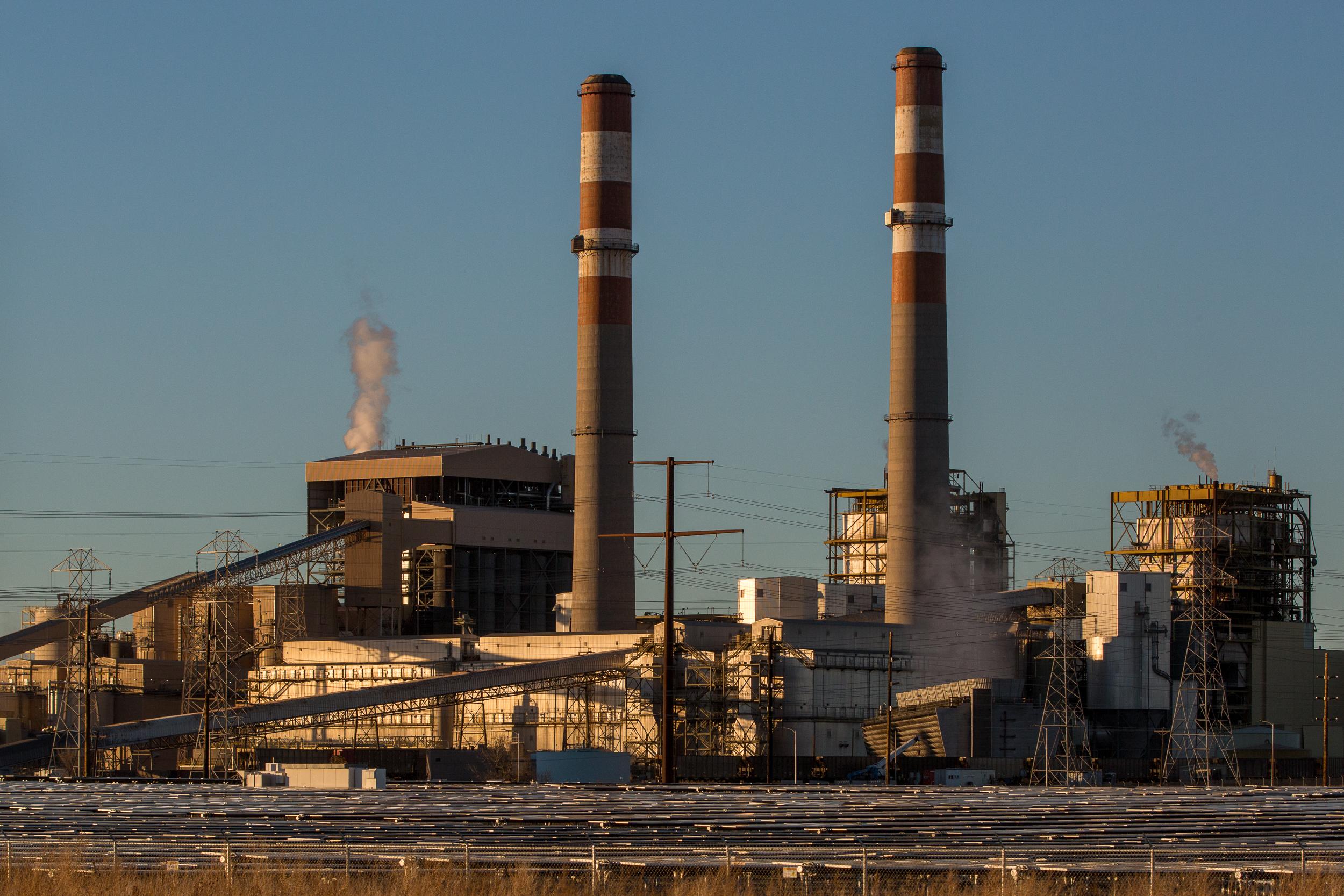
Xcel Energy has struck a deal to close Colorado’s largest coal-fired power plant before 2035, a move that could slash the utility’s carbon dioxide emissions by nearly 90 percent this decade and end a years-long saga of breakdowns, pollution and opposition.
The agreement, filed Wednesday after days of negotiations, comes as the Colorado Public Utilities Commission considers how the state’s largest utility should minimize its contribution to climate change.
“This doesn’t resolve all issues … but it does make significant advancements in being able to achieve a broad outcome that is very balanced for customers, for our communities that are impacted by the transition, as well as the company,” Xcel-Colorado President Alice Jackson said in an interview.
Environmental groups, which have contested the plan since it was first proposed almost 20 years ago, did not join the settlement, saying the investor-owned utility still isn’t moving fast or far enough in cutting emissions.
Their opposition sets up a series of hearings in front of the commission, which are scheduled to begin in December. The three commissioners are expected to make a decision on the proposal early next year.
At the center of the debate is the Comanche Generating Station in Pueblo and the failures of its newest coal-fired unit, Comanche 3. The facility cost more than a billion dollars to complete and was originally planned to run until 2070, but poor maintenance and oversight led to nearly two cumulative years of unplanned shutdowns and electricity costs that climbed 45 percent higher than originally forecast, according to a state investigation.
Comanche was also Colorado's single-largest source of greenhouse gas emissions in 2018, according to U.S. Environmental Protection Agency data.
Xcel Energy confirmed plans earlier this year to speed up the original retirement date and close the plant by 2040. The detail was made public as part of a sprawling $8 billion proposal that included new power transmission and renewable generation projects. A wide range of parties weighed in with their own alternatives; Xcel sought to negotiate the plan with them ahead of formal hearings, according to some of the groups involved.
Under the proposed settlement, Xcel would close Comanche by the end of 2034. During that interim, it would transition to reliance on lower-cost generators, running the plant at half-capacity by 2025 and at only a third of its full capacity by 2029.
The changes under the agreement could lead Xcel to cut its emissions by an estimated 87 percent by the end of the decade, according to the settlement. At the same time, it would shutter a plant that cost more than $1 billion and likely require additional investment to build renewable resources to replace Comanche 3’s output.
The agreement was supported by state agencies including staff of the Public Utilities Commission, the Colorado Energy Office and the Colorado Office of the Utility Consumer Advocate. Local governments also support the deal, including the city and county of Pueblo, Denver and Boulder, and labor groups including the International Brotherhood of Electrical Workers and Colorado Solar and Storage Association.
“We think that it meets our major goals,” said Keith Hay, director of policy for the Colorado Energy Office. “It achieves earlier greenhouse gas emissions reductions, it achieves more greenhouse gas emissions reductions by 2030, but just as importantly, it provides security to the city and county of Pueblo.”
Pueblo city and county officials expressed frustration with Xcel in recent months, saying in interviews and public filings they expected Comanche to run until 2070. Xcel paid Pueblo nearly $31 million in property taxes last year, a significant share of which goes to public schools, libraries, water conservation districts and the governments themselves, according to filings.
As part of the proposed settlement, Xcel would pay the remainder of its property taxes to Pueblo County through 2040, either directly or from new taxes on any possible replacement generation.
“We’re sort of lucky because we have some time now,” Pueblo Mayor Nick Gradisar said Wednesday. “We know what the time frame is, so we have a lot of time to replace those property taxes, try to replace those jobs that are good jobs there at Comanche 3.”
Three environmental organizations involved in the proceedings — Sierra Club, Western Resource Advocates and the Natural Resources Defense Council — did not sign on to the settlement.
Matthew Gerhart, an attorney representing Sierra Club, denounced a settlement provision for Xcel to own at least $626 million of generation from Comanche 3’s replacement.
“That is just corporate greed,” Gerhart said.
Gwen Farnsworth, the managing senior policy advisor for Western Resource Advocates said the settlement still allows Xcel to acquire new natural gas resources.
“It could commit Xcel to new long-term investments in fossil fuel resources and operations while Colorado needs to capture as much low-cost opportunities to reduce carbon emissions as we can,” she said.
Jackson, Xcel-Colorado’s president, said clean energy technology is not advanced or affordable enough to close Comanche 3 by the end of the decade.
“We need to give time for technology to breathe and grow and evolve, so that when we are ... replacing that capacity and that energy, it’s in either low-carbon or even zero-carbon dispatchable resources,” Jackson said.
Both Gerhart and Farnsworth said they are now preparing for upcoming hearings.









